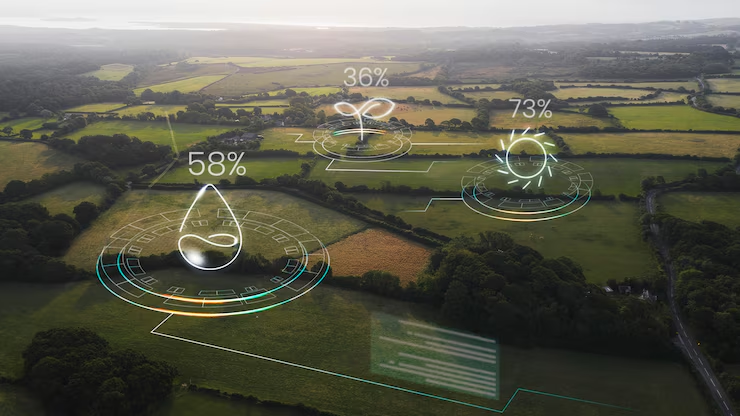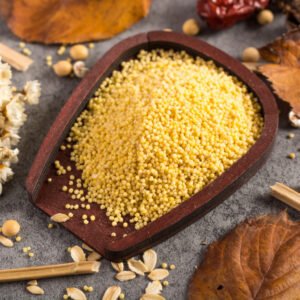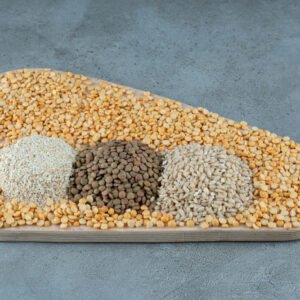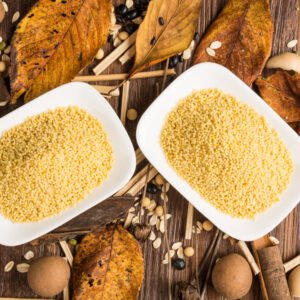🌾 Introduction
Farming has come a long way from the days of manual plowing and seasonal guesswork. In the age of technology, agriculture is undergoing a quiet revolution, driven by precision farming tools. These tools aren’t just about fancy gadgets; they’re about helping farmers make smarter decisions, reduce waste, and improve yield in ways that were never possible before.
Precision farming (or precision agriculture) uses advanced technologies like GPS, IoT, AI, drones, and data analytics to monitor, analyze, and manage crops and livestock with pinpoint accuracy. Instead of treating an entire field the same, precision farming allows farmers to treat each section, sometimes even each plant, based on its unique needs.
And right at the heart of this revolution are companies like CMS Industries, one of the most trusted Agricultural Products Manufacturers and Suppliers globally. Their commitment to innovation is helping shape the farms of tomorrow.
🌐 What is Precision Farming?
Precision farming is a data-driven approach to agriculture. The idea is simple: use technology to observe, measure, and respond to variability in crops, soil, and weather. Rather than applying the same amount of fertilizer, water, or pesticide across an entire field, precision agriculture enables tailored treatment—saving money and reducing environmental impact.
The end goal? Higher efficiency, better yields, and more sustainable farming practices.
🔍 Core Principles of Precision Farming
- Observation – Collecting real-time data from fields using sensors, drones, or satellites.
- Analysis – Interpreting the data using software, AI, and models.
- Decision-Making – Using insights to make smarter, faster, and more efficient choices.
- Action – Applying inputs (water, fertilizer, seeds) only where and when they are needed.
This approach minimizes waste, maximizes output, and aligns with environmental sustainability goals.
Read More: Finding the Best Farming Equipment Suppliers Near You
🌟 Why Are Precision Farming Tools So Important?
In an era where climate change, population growth, and limited resources challenge global food production, precision tools provide a lifeline. They help farmers:
- Increase productivity per acre
- Reduce input costs (fertilizers, pesticides, seeds)
- Use water more efficiently
- Improve soil health and sustainability
- Enhance crop quality and consistency
- Monitor farm operations remotely
These tools aren’t just nice-to-have—they’re becoming essential for modern-day agriculture.
Types of Precision Farming Tools
Precision farming isn’t powered by one tool—it’s an ecosystem of technologies working together to boost accuracy, efficiency, and sustainability. From data-gathering devices to autonomous machinery, each tool serves a specific function in the agricultural process.
Here’s a breakdown of the most common categories of precision farming tools and how they work:
1️⃣ GPS-Based Field Mapping
What It Does:
Global Positioning System (GPS) tools allow farmers to map their fields with incredible accuracy. These maps help identify variations in soil type, crop performance, and terrain.
How It Works:
GPS devices collect location-based data across the entire field. Combined with Geographic Information Systems (GIS), this data is used to create zonal maps for planting, fertilizing, and irrigation.
Benefits:
- Enables variable-rate input application
- Reduces overlaps and missed spots
- Optimizes equipment guidance and movement
2️⃣ Soil Sensors and Moisture Probes
What It Does:
These underground sensors provide real-time data on soil conditions such as moisture levels, temperature, salinity, and nutrient content.
How It Works:
Sensors transmit data to a central platform, helping farmers decide when and how much to irrigate or fertilize.
Benefits:
- Prevents over- or under-watering
- Increases water-use efficiency
- Promotes better root health and crop consistency
3️⃣ Drones and Aerial Imaging
What It Does:
Drones capture aerial views of farmland and deliver high-resolution images for monitoring crop health, pest damage, and irrigation coverage.
How It Works:
Drones equipped with infrared and multispectral cameras fly over fields and send data to analysis platforms. These images reveal plant stress that isn’t visible from the ground.
Benefits:
- Detects diseases and nutrient deficiencies early
- Reduces scouting time and labor
- Allows precision spraying in problem zones
4️⃣ Variable Rate Technology (VRT)
What It Does:
VRT enables precise application of seeds, water, fertilizers, and pesticides based on real-time field data.
How It Works:
It uses pre-programmed maps and sensors to adjust input levels automatically as equipment moves through the field.
Benefits:
- Increases yield per input unit
- Cuts waste and operational costs
- Supports site-specific management practices
5️⃣ Autonomous Tractors & Smart Equipment
What It Does:
Autonomous and semi-autonomous farm equipment handle tasks like planting, spraying, or harvesting without human intervention.
How It Works:
These machines are guided by GPS, sensors, and machine learning algorithms. They follow optimized paths and adjust in real-time to field conditions.
Benefits:
- Reduces the need for manual labor
- Works around the clock with minimal supervision
- Enhances operational efficiency
6️⃣ Farm Management Software (FMS)
What It Does:
FMS platforms centralize all farm data—soil, crop, weather, and financials—into a single dashboard. This software helps plan, monitor, and analyze every aspect of farm operations.
How It Works:
Farmers input or receive automated data, then use the system to make decisions based on trends, forecasts, and cost analysis.
Benefits:
- Boosts decision-making accuracy
- Improves record-keeping and compliance
- Offers mobile access for on-the-go monitoring
How Precision Farming Tools Work Together
Precision farming isn’t just about having the latest gadgets—it’s about integrating those tools to create a cohesive, intelligent farming system. When tools like drones, sensors, GPS, and software communicate with each other, farmers gain full control over their fields from seed to harvest.
Let’s break it down step-by-step:
🌱 Step 1: Data Collection from the Field
The first step in precision farming begins with gathering accurate data. This is done using:
- Soil sensors to monitor moisture and nutrients
- Weather stations for forecasting and local climate tracking
- Drones and satellites capturing aerial imagery
- GPS-enabled tractors mapping every inch of the farm
These tools feed real-time information into the system—helping farmers understand what’s happening below and above the surface.
🧠 Step 2: Analysis and Decision-Making
Once the data is collected, it’s analyzed through farm management software or cloud-based platforms.
- AI and analytics detect patterns and trends.
- The software creates prescription maps for irrigation, fertilization, or seeding.
- Insights are visualized in easy-to-read dashboards.
Farmers can now make decisions based on facts, not just intuition.
🚜 Step 3: Variable Rate Application (VRT) in Action
Armed with insights, smart equipment, such as autonomous tractors or precision sprayers, executes tasks across the farm:
- Seeds are planted at different rates in different zones.
- Fertilizers are applied only where needed.
- Pesticides are sprayed on specific problem areas, not entire fields.
This targeted approach reduces input usage, saves costs, and boosts productivity.
📲 Step 4: Continuous Monitoring and Adjustments
Precision farming doesn’t stop after planting or spraying. Tools continue to monitor the field throughout the season:
- Drones fly over crops weekly to detect stress or pest outbreaks.
- Sensors alert the system when soil becomes too dry.
- Tractors upload live stats from the field.
If conditions change, the system can recalculate and redirect actions, ensuring nothing is wasted, and plants get exactly what they need.
🔄 Real-Time Integration is the Key
When all these components are connected, the farm operates like a smart ecosystem. It’s not just about technology—it’s about information flow and precision execution.
Innovation doesn’t happen in isolation. That’s why CMS Industries goes beyond just supplying irrigation products—they provide components that are compatible with modern precision systems. Whether you’re connecting your irrigation system to sensors or using GPS-based fittings, CMS delivers products that help integrate seamlessly into your farm tech stack.
Benefits of Precision Farming Tools
Precision farming isn’t just about high-tech gadgets—it’s about real, measurable results that matter to farmers, the environment, and the future of food production. When the right tools are in place and working in sync, the benefits can be profound.
Here’s how precision farming tools are transforming agriculture from the ground up:
✅ 1. Improved Yield and Productivity
Precision tools help farmers optimize every input—from seed depth to irrigation frequency—resulting in more productive harvests.
- Better seed placement leads to stronger plant emergence.
- Efficient input use ensures that crops get exactly what they need.
- Timely interventions prevent losses due to disease or stress.
This results in higher yields per acre, often with fewer resources.
💸 2. Cost Reduction and Resource Efficiency
Why water the entire field when only certain areas need it? Why apply fertilizer uniformly when half the field is already nutrient-rich?
With tools like variable rate technology (VRT) and moisture sensors, farmers can:
- Cut fertilizer and pesticide costs by up to 30%
- Save 20-50% on water usage
- Reduce fuel and labor through automation
Every rupee, liter, or hour saved adds up, creating more cost-effective farm operations.
🌍 3. Environmental Sustainability
Sustainability is no longer optional—it’s a necessity. Precision agriculture tools help farms become greener by:
- Reducing chemical runoff into nearby water bodies
- Conserving water through targeted irrigation
- Protecting soil from over-farming or nutrient imbalance
- Lowering greenhouse gas emissions with efficient machinery use
This approach aligns with global climate goals and responsible farming ethics.
🧠 4. Smarter Decision-Making with Data
Imagine knowing the exact condition of your field without even stepping outside. Precision tools empower farmers with:
- Real-time data dashboards
- Forecasts based on historical data
- Instant alerts for pests, drought, or nutrient needs
This isn’t just farming—it’s a data-driven strategy. It removes the guesswork and replaces it with smart, science-backed decisions.
📈 5. Long-Term Farm Health and Profitability
Precision agriculture is a long game. Over time, it helps maintain:
- Soil fertility through precise input usage
- Crop rotation planning with accurate yield history
- Reduced dependency on expensive, emergency interventions
Farms become more resilient, more sustainable, and more profitable across seasons.
Read More: Benefits of Using Organic Fertilizers in Farming
Challenges of Precision Farming Tools
While precision farming offers exciting possibilities, it’s not without its hurdles. From high-tech costs to knowledge gaps, there are real challenges that farmers, especially smallholders, face when trying to adopt these tools.
Understanding these limitations helps farmers prepare, adapt, and make smarter decisions when transitioning to precision-based agriculture.
💰 1. High Initial Investment
Let’s face it: technology isn’t cheap.
- Drones, sensors, autonomous tractors, and smart irrigation systems come with a hefty upfront cost.
- Even basic farm management software often requires monthly subscriptions or hardware compatibility.
This can be a barrier for small and mid-sized farms, especially in developing regions.
🧑🏫 2. Lack of Technical Knowledge and Training
You can’t just drop a drone on a field and expect miracles.
- Many farmers are unfamiliar with tools like GIS, data analytics, or software dashboards.
- There’s a need for hands-on training, tutorials, and support systems to ensure proper usage.
Without proper training, the tools are underutilized—or worse, misused.
📡 3. Connectivity and Infrastructure Limitations
Many rural areas suffer from poor internet access, limited cellular coverage, or unreliable power supply.
This makes it hard to:
- Upload data to cloud-based platforms
- Operate real-time monitoring systems
- Run IoT-based sensors and machinery
Connectivity issues can severely limit the effectiveness of precision tools.
🧾 4. Data Overload and Complexity
Too much data can be just as bad as too little.
- Farmers may receive massive volumes of data but struggle to interpret it.
- Misreading data can lead to wrong decisions, which can harm yield instead of improving it.
There’s a growing need for user-friendly software that simplifies insights and recommendations.
🔧 5. Maintenance and Support
Advanced machinery means more parts to break, and not every village has a technician nearby.
- Sensors need calibration.
- Drones may need software updates or part replacements.
- Tractors with GPS systems need regular tuning.
Without access to reliable after-sales service, downtime can cost farmers dearly.
As a customer-focused Agricultural Products Manufacturer and Supplier, CMS understands these challenges. That’s why their offerings are built to be:
- Durable even in harsh field conditions
- User-friendly with simple interfaces
- Cost-effective with long-term value in mind
Plus, their commitment to technical support ensures farmers aren’t left in the dark after purchase.
🔮 The Future of Precision Agriculture
As technology continues to evolve at a rapid pace, so does its role in agriculture. Precision farming is no longer just about optimizing operations—it’s becoming the foundation of future farming. The next wave will bring greater automation, AI integration, and climate-smart innovations that make farming more resilient, productive, and sustainable.
Here’s what the future holds for precision agriculture:
🤖 1. Artificial Intelligence (AI) & Machine Learning
AI is already being used to detect patterns, analyze crop health, and predict yields. But what’s next?
- Self-learning algorithms that improve with every season
- Automated decision-making for real-time crop management
- AI crop advisors that recommend the best actions based on decades of weather and soil data
The future is about predictive farming, not reactive farming.
🛰️ 2. Satellite Farming and Remote Sensing
Future farms will be guided not just from the ground, but from space.
- Satellite imagery will offer daily updates on crop growth and field conditions.
- Multi-spectral sensors will detect changes in chlorophyll, moisture, or disease before they become visible.
Farmers will have an eye in the sky to track performance without leaving their homes.
🚜 3. Fully Autonomous Farming Equipment
We’re talking about tractors, drones, and harvesters that don’t need a driver.
- AI-guided tractors will plant, spray, and harvest based on field data.
- Swarm robotics could be deployed for precision weeding or crop monitoring.
- Maintenance alerts and diagnostics will be sent to the farmer’s phone.
Farming will look more like robotic orchestration than manual labor.
📊 4. Blockchain and Traceability
Consumers are demanding more transparency. Blockchain will make it possible to:
- Trace food from seed to shelf
- Certify crop quality and sustainability practices
- Improve supply chain efficiency and reduce fraud
This will boost both consumer trust and farmer credibility.
🌎 5. Climate-Smart Agriculture
Precision tools are key to climate-resilient farming. As weather patterns shift, tools will help:
- Adapt planting schedules based on climate forecasts
- Use drought-tolerant irrigation systems
- Monitor soil carbon for regenerative agriculture
Sustainability will no longer be a buzzword—it will be a necessity.
🔌 6. Internet of Things (IoT) Ecosystems
Everything will be connected.
- Irrigation systems will talk to weather stations.
- Tractors will sync with satellites and soil sensors.
- Farmers will use their phones to control every part of the farm in real time.
This hyper-connected ecosystem will be the central nervous system of modern agriculture.
- Smart irrigation systems
- IoT-compatible components
- Durable infrastructure for automated farming
Their solutions are designed not just for today, but for the farm of tomorrow.
How to Choose the Right Precision Farming Tools
With so many technologies available, choosing the right set of tools can feel overwhelming. But here’s the truth: you don’t need everything at once. Precision farming works best when it’s strategically implemented—step by step, based on your farm’s goals, budget, and scale.
Here’s a smart approach to selecting the right precision farming tools:
✅ 1. Define Your Objectives
Start by asking the right questions:
- Are you trying to save water?
- Do you want to boost yield in specific zones?
- Is your focus on labor savings, cost reduction, or sustainability?
Your goal should guide your investment.
📏 2. Assess the Size and Type of Your Operation
Different farms require different tech levels.
- Small farms may benefit most from soil sensors and mobile-based irrigation controls.
- Large-scale operations may need drones, VRT machinery, and fully integrated software systems.
- Greenhouses and horticultural farms may focus on climate control and moisture tracking.
Tailor your tech to your setup.
🧪 3. Start Small, Scale Later
Don’t dive in with the most expensive drone or autonomous tractor.
- Begin with cost-effective tools like moisture probes or GPS mapping.
- Use free or low-cost farm management apps to get used to digital tracking.
- Gradually expand into drones, software platforms, and automation.
This reduces risk and gives you time to build confidence with the tech.
🏗️ 4. Prioritize Compatibility and Integration
The best precision farming systems are interconnected.
- Make sure your equipment can communicate with software platforms.
- Choose sensors and machinery that work with IoT systems.
- Ask about data sharing and storage options before investing.
This prevents future headaches and ensures long-term usability.
👩🌾 5. Consider Training and Support
Technology is only as useful as your ability to use it.
- Pick suppliers who offer onboarding, training, and user support.
- Look for tools with simple interfaces or available in your local language.
- Ask about repair services, maintenance contracts, and tech support channels.
Don’t go it alone—partner with providers who walk the journey with you.
🛒 6. Partner with a Trusted Supplier
The right supplier can make or break your experience. Look for companies with a track record of success and that understand the realities of farm life.
- Durable, high-quality components
- Compatibility with smart farming tools
- Support for both smallholders and industrial farms
They don’t just sell tools—they help farmers build systems that last.
Conclusion: Embracing the Future of Farming
Precision farming tools are more than just innovations—they’re the key to unlocking the next era of agriculture. By combining data, technology, and sustainability, these tools empower farmers to grow smarter, not harder.
From soil sensors and drones to smart tractors and AI-driven decisions, precision agriculture allows for:
- Increased productivity
- Reduced waste and costs
- More sustainable, eco-friendly farming
- Better use of time and resources
However, it’s also important to recognize the challenges—whether that’s cost, technical knowledge, or infrastructure. The good news? With the right partners, like CMS Industries, farmers can ease into the tech world and evolve their farms gradually and successfully.
❓ Frequently Asked Questions (FAQs)
1. What are precision farming tools used for?
Precision farming tools are used to collect and analyze field data, automate farming tasks, and apply inputs like water, fertilizer, and pesticides with extreme accuracy. The goal is to increase yield, reduce waste, and make farming more efficient and sustainable.
2. Are precision farming tools expensive for small farmers?
While some tools like drones and autonomous machinery can be costly, there are many affordable precision tools for small farmers, such as soil moisture sensors, GPS trackers, and mobile farm management apps. It’s best to start small and scale up over time.
3. How do sensors help in precision agriculture?
Sensors in precision farming monitor critical factors like soil moisture, temperature, nutrient levels, and crop health. This real-time data allows farmers to make accurate decisions on when and where to irrigate, fertilize, or harvest, improving productivity and reducing input use.
4. Can precision agriculture reduce environmental impact?
Yes, significantly. Precision farming minimizes water waste, prevents overuse of fertilizers and pesticides, and protects soil health. It also helps in reducing emissions by lowering fuel consumption and preventing unnecessary fieldwork.
5. Where can I buy precision agriculture components in India?
You can find precision farming components and irrigation solutions from CMS Industries—a trusted Agricultural Products Manufacturer and Supplier offering durable and compatible solutions for modern farming.





